The CRKT Rakkasan was designed by Austin McGlaun as part of Columbia River Knife & Tool’s “Forged By War” program. Austin McGlaun is a military veteran who served in the 101st Airborne Division in Iraq and chose to donate 10% of net profits to the Green Beret Foundation.
CRKT- Rock-Solid Designs
Anyone who has seen my many knife designs knows that I like designs that are simple, uncomplicated, easy to manufacture, and tough. There are several knife companies producing some of my designs, with more on the drawing board. One company is Columbia River Knife & Tool (CRKT), of which I’ve been a fan of their knives since they first started out in the knife industry.
CRKT was actually started by two executives from another major knife-making company. They started out with some rock-solid designs and have continued to grow year-after-year.
While many will argue the point, you can get as good of a knife as you want from overseas. In this case, CRKT has many of their knives made in Taiwan. They actually own one of the plants and lease the other one. Every six weeks or so, an executive from CRKT makes a trip to Taiwan and spends a few weeks there to make sure everything is operating as it should be. They are very picky about their knives. One of the many benefits is that we, the knife consumers, get some great knives at super good prices. I like that.
CRKT’s Forged By War Program
CRKT started what they call the “Forged By War” program. These knives designed for CRKT are from military veterans who are working through their various challenges. Drawing from their experiences in combat, they wanted to design knives for their brothers and sisters who are still in the military and in combat. CRKT donates 10% of their net profits from all the knives in the Forged By War program to the charity of choice by the various knife designers/makers. This is outstanding!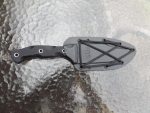
In addition to serving in the 101st Airborne Division in Iraq, Austin served as a street cop in Columbus, GA. He knows a knife has to work as both a weapon and a tool.
The Rakkasan Knife Name
McGlaun, called this particular fixed blade knife the Rakkasan. It’s reminiscent of the WWII Paratroopers from the 187th Infantry Regiment. This word is loosely translated, or was, by the Japanese to one meaning “soldiers falling from the sky under umbrella”. The Japanese had never seen anything like our paratroopers falling from the sky by an “umbrella” of sorts. Needless to say, the Japanese were more than a little shocked by soldiers falling from the sky back then.
Rakkasan Description
We have a utility fixed-blade knife that can be used as a weapon of last resort. And, let’s be honest here. At least 90% of what a knife is used for is utility purposes in the military, and as a weapon of last resort. We want to avoid hand-to-hand combat if at all possible. However, a good knife can sure save the day.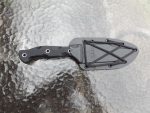
Blade
We have a 4.894-inch blade that is made out of SK5 Carbon Steel with a Rockwell hardness of 55-58, which is about perfect. It holds an edge a good long time and is fairly easy to resharpen. Of course, the one drawback to carbon steel is that it will rust easily. The Rakkasan has a black powder coating on the blade to help protect the blade from the elements. The blade weighs 9.2 ounces and comes in a Kydex sheath that has paracord wrapped around it. (I have more on this shortly.)
We have a very nice clip point blade on the Rakkasan, and it can be used for fine detail cutting as well as deeply penetrating something. There is also a recurve to the blade design. This is a hard thing to understand, but a recurve blade actually cuts all out of proportion to the length of the blade. Plus, when it grabs onto something, when cutting, it pulls whatever that material is into the blade and cuts deeply.
Handle
The handle is made out of tough black G10, and it is slightly longer than need be, which is a good thing. Many fixed blade knives I’ve tested over the years have a handle that is lacking, if you ask me. There is no reason for this. I like to have plenty of handle to hold onto. The handle scales are nicely sculpted, too, for a sure hold.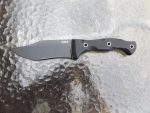
Sheath
I was a little confused, at first, with the sheath that the Rakkasan came in; there is no clip on it for attaching to a belt or gear. The way the paracord is wrapped around the sheath, it can be attached to your belt or tactical vest, or any equipment in short order. Still, for my own use, I’d like to see some kind of clip on the sheath. This is simply just my druthers. However, I don’t see any problem attaching the sheath to many different pieces of kit with the paracord.
Testing
Blackberry Vines
We never lack for anything that needs cutting on our small homestead. Regular readers will know that one of the toughest things I test are blackberry vines. If a knife would not cleanly severe one of these ultra-tough vines, it’s of no use to me. Many large blades simply slide right off these vines. It takes a very sharp blade to cleanly cut one of these vines in half with one felled swoop. The Rakkasan had no problems in this respect.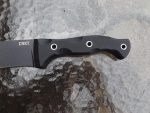
Cardboard
Another tough cutting test is cardboard. Many people don’t understand how fibrous and tough cardboard is, and it is very tough a blade. They get dull in short order. The Rakkasan had no problem ripping through cardboard. I have packages coming to my homestead almost daily in cardboard boxes. The Rakkasan took care of opening them.
Kitchen
In the kitchen, the Rakkasan had no problem cutting meats and veggies. While it wasn’t designed for this type of work, it sure did yeoman’s duty with many kitchen chores. Just remember to dry the carbon steel blade after use to help prevent any rust from forming on the edge of the blade.
For Use in Survival and/or Combat
Lastly, this knife can be used for survival and/or combat. It has plenty of belly to the blade, and the deep clip point will sure penetrate. I can see this blade being used to dress out big game without any problems. And, in a survival situation, it sure won’t let you down. It can do anything you ask of it, even chopping, so long as we aren’t talking about chopping down a big tree.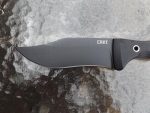
The Best for Last
I’ve kept the best for last. The Rakkasan has a retail of only $125, and if you shop around you can find CRKT products deeply discounted. That’s a good thing. Austin McGlaun did an outstanding job designing this knife, and CRKT did us all a favor bringing it on the market at a price point we can all afford. Check one out. I think you’ll be happy. It’s a lot of knife.
– Senior Product Review Editor, Pat Cascio

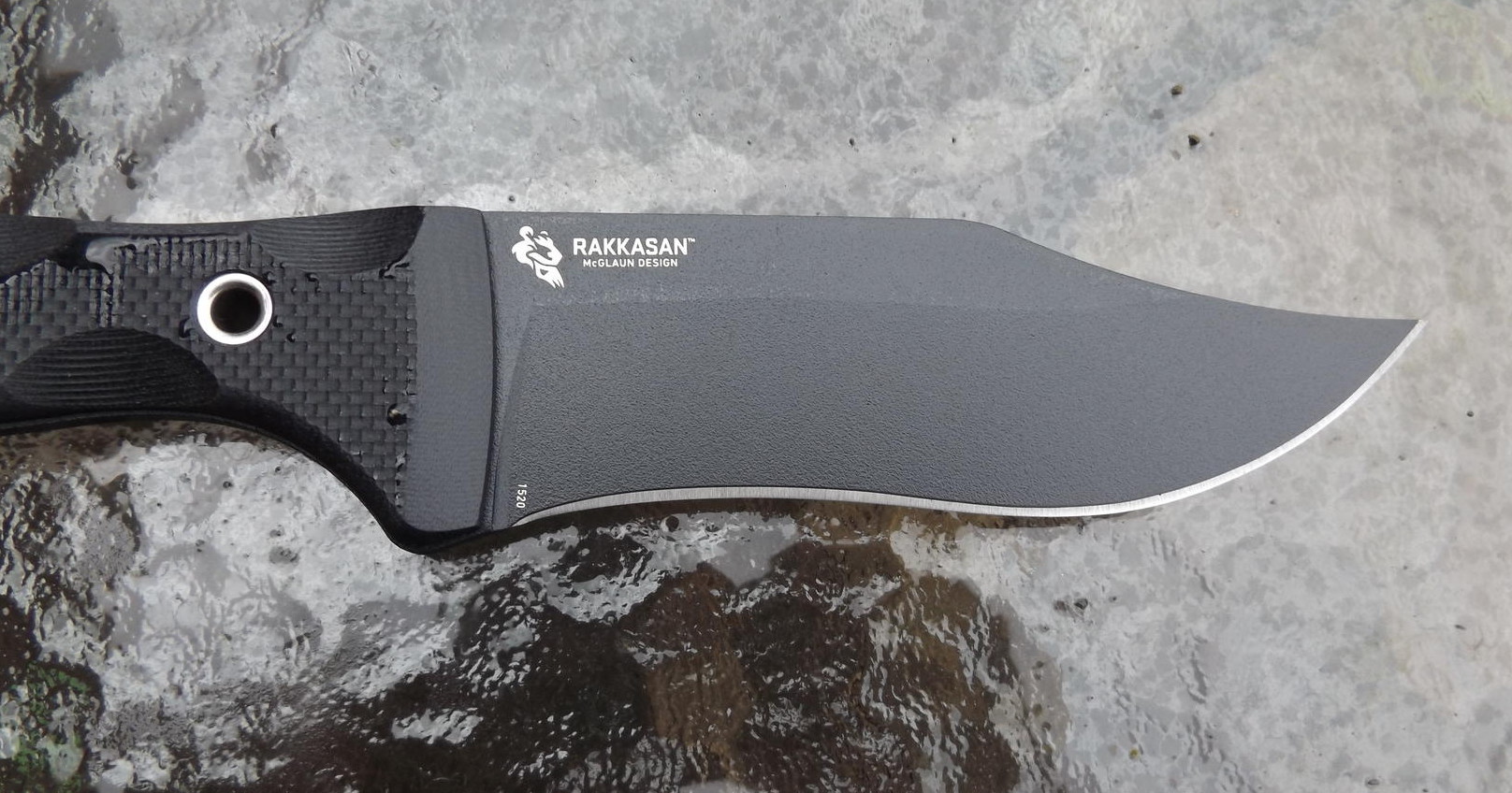









CRKT has an extensive lineup – most people don’t see all the models of knives offered and in different variations unless they are willing to search thoroughly. I’m a big fan of a few specific brands, but CRKT is great for their quality, price point, utility and durability. Very underrated in my opinion. They have a place in my family emergency bags.
I have at least a dozen CRKT blades, and I agree with Chris M and Pat Cassio. Extensive line of excellent quality knives for any job and at a price point that let’s you get one and a couple boxes of 5.56 or 9mm. Custom knives are of course super cool, but very expensive and so nice looking you almost hate to use them.
Sorry Pat but it appears that a $125 knife, made in Taiwan with a carbon blade (designation of which I’ve never heard of), why not just buy a good American made knife like a Benchmade, CZ or USA made Spyderco.
Curious choice of American made knife options. My 22-year old Spyderco Endura (50/50) that remains a steadfast companion says SEKI City, and right under that on the blade “JAPAN.” I can’t find the new Endura I purchased last year to validate the made in japan status.